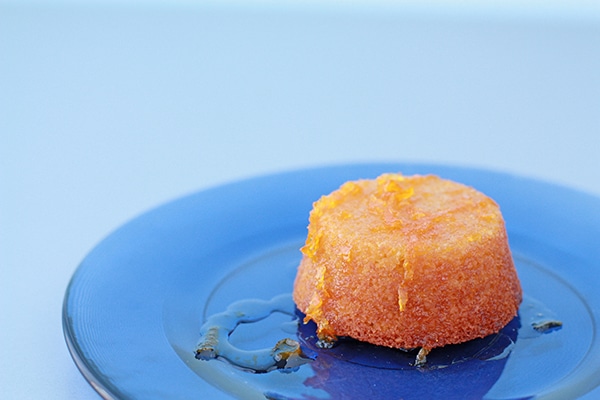
Baking with whole oranges
For this orange cake recipe, the whole orange is used, as with three fruit marmalade. To do so, you first have to boil the fruit. This softens the pith and the skin of the fruit so that it will have a better texture when blended to make the cake batter.
Boiling can also help remove bitterness while preserving the natural oils of the orange. The bitter compounds are soluble in water so are released into the water as you boil the fruit, while the oils are not soluble in water (not even boiling water), so these stay with the orange fruit. Boiling is a great way to reduce bitterness of citrus fruit.

Making gluten-free orange cakes with almond meal
Instead of flour, these orange cakes are made with ground almond. This would yield a denser cake if it weren't for two things:
- whipping the eggs with the sugar to incorporate air. Remember whipped eggs are an important leavening agent in baking: the eggs trap and stabilize bubbles of air, aerating the batter to reduce density and improve texture. It's the same principal as in this warm-milk cake or the chocolate genoise in this black forest cake.
- baking powder acting as a chemical leavener which reacts to release a gas that provides lift to the cake batter as it bakes
By baking these orange cake with almond meal, you end up with moist orange cakes that are both grain free and gluten free! On the other hand, this gluten-free lemon cake is made with mashed potatoes which lends a lot of moisture and softness to the cake.
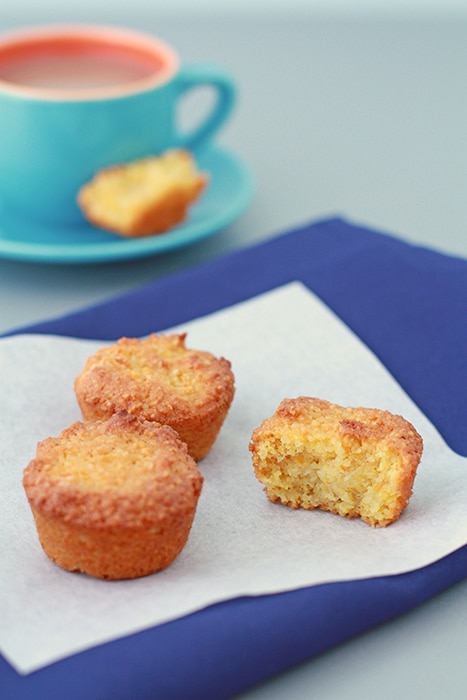
Orange syrup using the zest and juice of an orange
I served these flourless orange cakes with a simple orange syrup. To make the orange syrup, the syrup is flavoured with both the juice and zest of an orange. The acidity of the orange juice is enough to prevent the syrup from crystallizing, just like you may add a little lemon juice to a caramel to prevent caramel from crystallizing.
For the orange syrup, I opted to zest the raw fruit and juice it, unlike for the cake, because in this case, I wanted the orange zest to be fine, which is impossible to obtain with the boiled fruit which would have to be chopped with a knife by hand. So while the whole fruit method is great for a rustic marmalade or for making an orange almond cake, it's not suitable for making orange syrup.

Can you freeze orange almond cakes?
These orange almond cakes are suitable for freezing. I would recommend freezing after the baked cakes have cooled completely, but without any syrup. To serve, defrost overnight preferably in the fridge. Serve the defrosted cakes with freshly made syrup which will perk up the flavour.
This orange almond cake recipe was adapted from here. The cakes are moist, and with a pleasantly coarse texture from the granular ground almonds. My favourite part of this recipe is that it uses the entire orange, peel and all. Just remember to boil the whole fruits (see recipe) to remove the unpleasant bitterness from the citrus. That's the secret to using whole citrus fruit in marmalade and cakes! The syrup I served it with reminds me of bitter-orange marmalade.
P.S. This cake recipe is gluten-free!
📖 Recipe
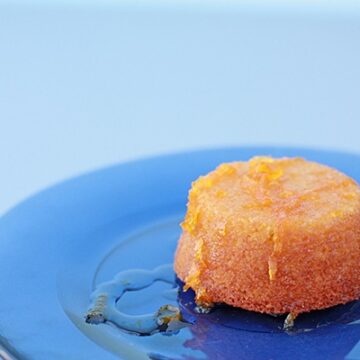
Gluten-Free Orange Almond Cake
Ingredients
For the orange almond cake
- 2 navel oranges washed thoroughly
- 3 large egg(s) room temperature
- 200 grams granulated sugar 1 cup
- 300 grams ground almonds 3 cups
- 1 teaspoon baking powder
For the orange syrup
- 1 navel orange washed thoroughly and dried
- 78 grams granulated sugar ~⅓ cup
- 1 splash orange liqueur like Triple Sec
Instructions
To make the orange almond cake
- Preheat the oven to 350°F (175 °C). Prepare the pan(s) you are using by generously greasing them (if gluten is not an issue, baking spray works well). To make 24 mini cakes, use a mini muffin pan like this one on Amazon. For an 8-inch (20-cm) cake pan (like this one on Amazon), line the bottom with parchment for easy unmolding after greasing. Set the pan(s) aside for later.
- Place the two oranges in a large saucepan, cover with cold water, and bring it to a boil. Boil the whole oranges for 20 to 30 minutes or until the skin feels softened and the fruit is beginning to collapse slightly.
- Drain the oranges and refresh them under cold water to quickly cool them.
- Coarsely chop the oranges and remove any seeds. Place the chopped orange in a mini food processor and process them until they become a paste and there are no more chunks. Set them aside.
- In the bowl of an electric mixer fitted with the paddle attachment, beat the eggs and sugar on medium-high speed until they are thick and cream colored.
- With a spatula, fold the ground almonds, baking powder and the orange paste into the mixture. Continue folding until all the ingredients are incorporated. Fill the prepared pan(s) with the cake batter and bake until a cake tester poked in the centre comes out clean. Be sure to bake until the edges are a dark golden. A 8-inch cake will take about an hour while smaller muffins take 30–40 minutes.
- Let the pans cool 15 minutes on a rack before carefully unmolding the cakes.
To make the orange syrup
- Zest the washed orange with a fancy zester (for nice ribbons of zest) or a microplane (for finer zest). Make sure to only take the outer layer of the rind and none of the white pith, which is more bitter.
- Place the orange zest in a small saucepan. Add the sugar and the juice of the zested orange to the saucepan.
- Bring to a boil, add a couple splashes of orange liqueur and simmer for 3 minutes or until the sauce is thickened.
- To serve, drizzle the sauce over the cake.



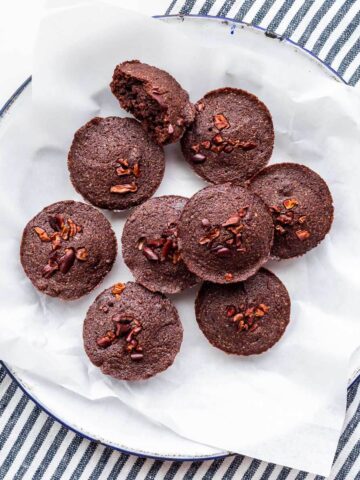

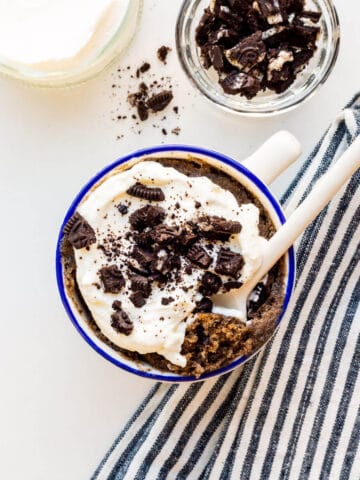

Kay says
Good luck Janice! I'm at a crossroads too and I'm not sure what I want to be doing next. I can't wait to read about your adventures. Keep posting. Maybe one day I'll make a trip to Canada and crash on your couch. xx
Oana says
This sounds so awesome and wonderful. Your adventure and your recipe. Good for you for taking the leap (or drive). It can be a tough city sometimes, I agree. What will you be doing in Ottawa?
mayssam @ Will Travel for Food says
Please don't fall in love with Ottawa! We need your pastry-making skills right here in Montreal, and preferably in my tummy! 🙂 So when are we having a sweet goodbye party for you?
Kiri W. says
Congratulations! What an exciting change for you! 🙂 I am sure you will love your adventure. I liked Montreal, but agree about the people sometimes being unapproachable.
This cake looks fantastic - I love almond baked goods to death.